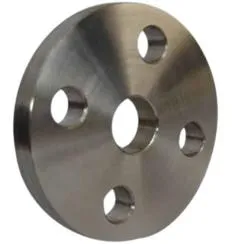-
Cangzhou Yulong Steel Co., Ltd.
-
Phone:
+86 13303177267 -
Email:
admin@ylsteelfittings.com
- English
- Arabic
- Italian
- Spanish
- Portuguese
- German
- kazakh
- Persian
- Greek
- French
- Russian
- Polish
- Thai
- Indonesian
- Vietnamese
- Zulu
- Korean
- Uzbek
- Hindi
- Serbian
- Malay
- Ukrainian
- Gujarati
- Haitian Creole
- hausa
- hawaiian
- Hebrew
- Miao
- Hungarian
- Icelandic
- igbo
- irish
- Japanese
- Javanese
- Kannada
- Khmer
- Rwandese
- Afrikaans
- Albanian
- Amharic
- Armenian
- Azerbaijani
- Basque
- Belarusian
- Bengali
- Bosnian
- Bulgarian
- Catalan
- Cebuano
- China
- China (Taiwan)
- Corsican
- Croatian
- Czech
- Danish
- Esperanto
- Estonian
- Finnish
- Frisian
- Galician
- Georgian
- Kurdish
- Kyrgyz
- Lao
- Latin
- Latvian
- Lithuanian
- Luxembourgish
- Macedonian
- Malgashi
- Malayalam
- Maltese
- Maori
- Marathi
- Mongolian
- Myanmar
- Nepali
- Norwegian
- Norwegian
- Occitan
- Pashto
- Dutch
- Punjabi
- Romanian
- Samoan
- Scottish Gaelic
- Sesotho
- Shona
- Sindhi
- Sinhala
- Slovak
- Slovenian
- Somali
- Sundanese
- Swahili
- Swedish
- Tagalog
- Tajik
- Tamil
- Tatar
- Telugu
- Turkish
- Turkmen
- Urdu
- Uighur
- Welsh
- Bantu
- Yiddish
- Yoruba

Dec . 06, 2024 16:51 Back to list
Understanding 2 Inch Pipe Flanges for Industrial Applications and Installation Methods
Understanding the 2-Inch Pipe Flange A Comprehensive Overview
In the realm of piping systems, flanges play an essential role in the assembly and maintenance of various industrial applications. One common size that emphasizes the importance of flanges in ensuring secure and leak-proof connections is the 2-inch pipe flange. Whether utilized in plumbing, petrochemical installations, or HVAC systems, understanding the specifications, types, and applications of 2-inch pipe flanges is crucial for engineers, technicians, and designers alike.
What is a Pipe Flange?
A pipe flange is essentially a mechanical component used to join two sections of pipe by interconnecting them, facilitating the transfer of materials like fluids or gases. It can also serve as a point of access for cleaning or inspection. Flanges come in various sizes, shapes, and materials, allowing them to accommodate different operational conditions and requirements.
Specifications of a 2-Inch Pipe Flange
The size of a flange is designated by its nominal diameter, which in this case is 2 inches. However, this does not indicate the actual outer diameter of the flange itself; rather, it refers to the inside diameter of the accompanying pipe. The dimensions of a 2-inch pipe flange, including bolt holes, thickness, and bolt circle diameter, are standardized according to specifications set by organizations like the American National Standards Institute (ANSI) and the American Society of Mechanical Engineers (ASME).
Typically, a 2-inch pipe flange can fall into several categories based on pressure ratings, known as classes. For instance, a common designation is the Class 150 flange, which is rated for a maximum pressure of 150 psi at moderate temperatures. Other common classes include Class 300 and Class 600, each suitable for different pressure and temperature applications.
Types of 2-Inch Pipe Flanges
There are several types of flanges employed in various applications. Notably, the most common types of 2-inch flanges include
1. Weld Neck Flange This flange has a long neck that allows for easy welding to the pipe. It is often used in high-pressure applications due to its strength.
2 inch pipe flange

2. Slip-On Flange As the name suggests, this flange slips over the end of the pipe and is welded or bolted in place. It is cost-effective and easy to install, making it suitable for many applications.
3. Blind Flange This type is used to seal the end of a piping system, allowing for easy maintenance or modifications without needing to dismantle existing connections.
4. Threaded Flange A threaded internal surface allows these flanges to be screwed onto pipes, making them ideal for applications where welding is not practical.
5. Socket Weld Flange Designed to fit around the outside of a pipe, it is typically used in high-pressure systems.
Applications of 2-Inch Pipe Flanges
The versatility of 2-inch pipe flanges ensures their presence across a range of industries. For example, in the oil and gas sector, these flanges are crucial for creating joints in pipelines that transport crude oil or natural gas. In water treatment plants, they are employed to connect pipes that carry water for purification.
Moreover, 2-inch flanges find application in HVAC systems, where they are used to connect ductwork, coils, and other components, ensuring efficient airflow throughout buildings. The food and beverage industry also utilizes these flanges, typically made from stainless steel, to connect pipes in sanitary applications, where cleanliness and safety are paramount.
Conclusion
In summary, the 2-inch pipe flange is a fundamental component that enhances the reliability and functionality of piping systems in various industries. By understanding its specifications, types, and applications, professionals can make informed decisions about flange selection for specific projects. Whether it's ensuring a leak-proof connection in a high-pressure environment or facilitating the easy assembly of a piping system, the significance of the 2-inch pipe flange cannot be overstated. As industries continue to evolve, the design and material choices for flanges will likely advance, ensuring they meet the growing demands of modern infrastructure and engineering challenges.
Latest news
-
ANSI 150P SS304 SO FLANGE
NewsFeb.14,2025
-
ASTM A333GR6 STEEL PIPE
NewsJan.20,2025
-
ANSI B16.5 WELDING NECK FLANGE
NewsJan.15,2026
-
ANSI B16.5 SLIP-ON FLANGE
NewsApr.19,2024
-
SABS 1123 FLANGE
NewsJan.15,2025
-
DIN86044 PLATE FLANGE
NewsApr.19,2024
-
DIN2527 BLIND FLANGE
NewsApr.12,2024
-
JIS B2311 Butt-Welding Fittings LR/SR 45°/90° /180°Seamless/Weld
NewsApr.23,2024











